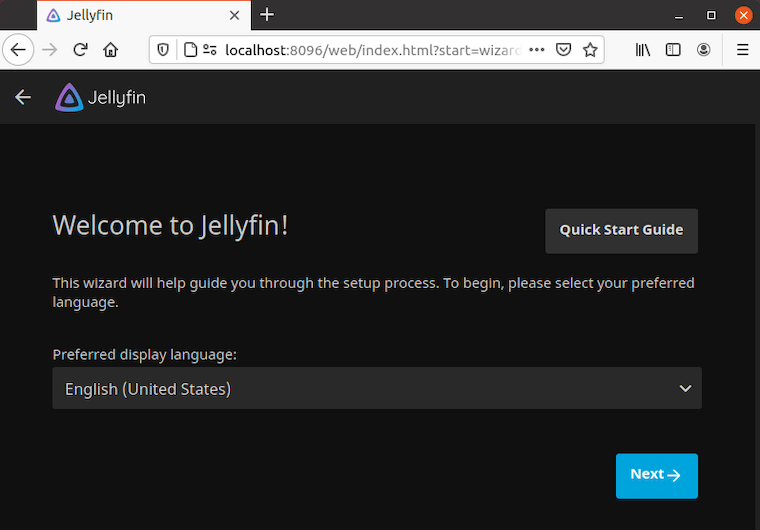How To Install Jellyfin on Ubuntu 24.04 LTS

In today’s digital age, having a reliable and feature-rich media server is essential for managing and streaming your personal media collection. Jellyfin, an open-source media server software, has gained popularity among tech enthusiasts and home users alike. This article will guide you through the process of installing Jellyfin on Ubuntu 24.04, the latest Long-Term Support (LTS) release of the popular Linux distribution.
Ubuntu 24.04 provides a stable and secure foundation for running Jellyfin, offering long-term support and regular updates. By the end of this guide, you’ll have a fully functional Jellyfin server up and running on your Ubuntu system, ready to organize and stream your media library across various devices.
What is Jellyfin?
Jellyfin is a free, open-source media server software that allows you to organize, manage, and stream your personal media collection. It supports a wide range of media formats, including movies, TV shows, music, and photos. Jellyfin stands out from alternatives like Plex and Emby due to its commitment to privacy, lack of premium features, and fully open-source nature.
Key features of Jellyfin include:
- Cross-platform compatibility (Windows, macOS, Linux, and various mobile platforms)
- Customizable user interface
- Live TV and DVR support
- Robust metadata scraping and management
- Multiple user accounts with parental controls
- Transcoding capabilities for optimal playback on various devices
Unlike Plex, which requires a subscription for certain features, Jellyfin offers all its functionality for free, making it an attractive option for users who prioritize openness and control over their media server.
Prerequisites
Before we begin the installation process, ensure that you have the following:
- A computer or server running Ubuntu 24.04 LTS
- Administrative access (sudo privileges)
- A stable internet connection
- At least 2GB of RAM (4GB or more recommended for better performance)
- Sufficient storage space for your media files
It’s also helpful to have a basic understanding of Linux command-line operations, although this guide will walk you through each step in detail.
Preparing Your Ubuntu System
Before installing Jellyfin, it’s crucial to ensure your Ubuntu system is up-to-date and properly configured. Follow these steps to prepare your system:
1. Update System Packages
Open a terminal and run the following commands to update your system’s package list and upgrade existing packages:
sudo apt update
sudo apt upgrade -y2. Install Necessary Dependencies
Jellyfin requires certain dependencies to function correctly. Install them using the following command:
sudo apt install apt-transport-https ca-certificates curl gnupg lsb-release -y3. Configure Firewall Settings
If you have UFW (Uncomplicated Firewall) enabled, you’ll need to allow traffic on the ports Jellyfin uses. Run these commands:
sudo ufw allow 8096/tcp
sudo ufw allow 8920/tcp
sudo ufw reloadThese commands open ports 8096 (for HTTP traffic) and 8920 (for HTTPS traffic) that Jellyfin uses by default.
Installing Jellyfin
Now that your system is prepared, let’s proceed with the Jellyfin installation:
1. Add the Jellyfin Repository
First, we need to add the Jellyfin repository to your system. Run the following commands:
curl -fsSL https://repo.jellyfin.org/ubuntu/jellyfin_team.gpg.key | sudo gpg --dearmor -o /etc/apt/trusted.gpg.d/jellyfin.gpg
echo "deb [arch=$( dpkg --print-architecture )] https://repo.jellyfin.org/ubuntu $( lsb_release -c -s ) main" | sudo tee /etc/apt/sources.list.d/jellyfin.list2. Install Jellyfin via apt
With the repository added, update your package list and install Jellyfin:
sudo apt update
sudo apt install jellyfin -y3. Verify the Installation
After the installation completes, Jellyfin should start automatically. You can verify its status using:
sudo systemctl status jellyfinIf Jellyfin is running, you should see “active (running)” in the output.
Configuring Jellyfin
With Jellyfin installed, it’s time to configure your media server:
1. Initial Setup Wizard
Open a web browser and navigate to http://localhost:8096 (or replace “localhost” with your server’s IP address if accessing from another device). You’ll be greeted by the Jellyfin setup wizard. Follow these steps:
- Choose your preferred language
- Create an admin user account
- Set up your media libraries (we’ll cover this in more detail later)
- Configure remote access settings (if desired)
- Choose your preferred metadata providers

2. Creating User Accounts
To create additional user accounts:
- Log in to the Jellyfin web interface as the admin user
- Go to the “Admin” dashboard
- Select “Users” from the left sidebar
- Click “Add User” and fill in the required information
- Set appropriate access levels and parental controls as needed
3. Adding Media Libraries
To add media libraries:
- In the Jellyfin web interface, go to “Admin” > “Libraries”
- Click “Add Media Library”
- Choose the content type (Movies, TV Shows, Music, etc.)
- Select the folders containing your media files
- Configure library options such as metadata downloading and real-time monitoring
Managing Media Libraries
Proper organization of your media files is crucial for Jellyfin to function effectively:
1. Organizing Your Media Files
Follow these best practices for organizing your media:
- Use separate folders for different media types (e.g., Movies, TV Shows, Music)
- For TV shows, use a folder structure like “Show Name/Season XX/Episode Files”
- Use consistent naming conventions for files (e.g., “Movie Title (Year).mp4”)
2. Scanning and Updating Libraries
Jellyfin automatically scans your libraries for new content, but you can manually trigger a scan:
- Go to “Admin” > “Libraries”
- Click the three-dot menu next to a library
- Select “Scan Library” or “Scan for New Content”
3. Metadata Management
Jellyfin automatically fetches metadata for your media. To manage metadata:
- Click on a media item in your library
- Select “Edit Metadata” from the three-dot menu
- Modify information or choose alternative metadata sources
Accessing Jellyfin
Jellyfin offers various ways to access your media server:
1. Local Network Access
On your local network, access Jellyfin by navigating to http://your-server-ip:8096 in a web browser.
2. Remote Access Setup
To access Jellyfin from outside your network:
- Configure port forwarding on your router for ports 8096 and 8920
- Set up a dynamic DNS service if you don’t have a static IP
- Consider using a reverse proxy for added security
3. Mobile Apps and Other Clients
Jellyfin offers official clients for various platforms:
- Android and iOS mobile apps
- Roku, Amazon Fire TV, and Android TV apps
- Kodi plugin
- Web browsers on any device
Advanced Configuration
For power users, Jellyfin offers advanced configuration options:
1. Transcoding Settings
Adjust transcoding settings in “Admin” > “Playback” to optimize performance and compatibility across devices.
2. Hardware Acceleration
Enable hardware acceleration to improve transcoding performance:
- Go to “Admin” > “Playback”
- Under “Transcoding,” enable “Hardware acceleration”
- Choose the appropriate acceleration method for your hardware
3. Plugins and Extensions
Enhance Jellyfin’s functionality with plugins:
- Go to “Admin” > “Plugins”
- Browse available plugins in the “Catalog” tab
- Install and configure plugins as needed
Troubleshooting Common Issues
If you encounter problems with Jellyfin, try these troubleshooting steps:
1. Connection Problems
- Verify that the Jellyfin service is running
- Check firewall settings and port forwarding configuration
- Ensure your network settings are correct in the Jellyfin dashboard
2. Media Playback Issues
- Verify that your media files are in supported formats
- Check transcoding settings and logs for any errors
- Ensure your client device has sufficient processing power for playback
3. Performance Optimization
- Monitor system resources and adjust transcoding settings if necessary
- Consider upgrading hardware if you frequently experience performance issues
- Optimize your network for smoother streaming (use Ethernet when possible)
Maintaining and Updating Jellyfin
To keep your Jellyfin server running smoothly:
1. Regular System Updates
Regularly update your Ubuntu system and Jellyfin installation:
sudo apt update
sudo apt upgrade -y2. Backing Up Jellyfin Data
Regularly back up your Jellyfin configuration and database:
sudo cp -r /var/lib/jellyfin /path/to/backup/location
sudo cp -r /etc/jellyfin /path/to/backup/location3. Upgrading to Newer Versions
When a new version of Jellyfin is released, upgrade using:
sudo apt update
sudo apt install jellyfinCongratulations! You have successfully installed Jellyfin. Thanks for using this tutorial for installing the Jellyfin software media system on the Ubuntu 24.04 LTS system. For additional help or useful information, we recommend you check the official Jellyfin website.